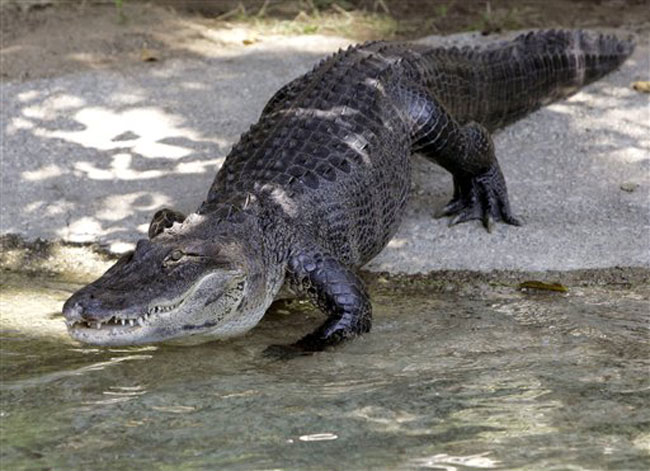Mystery of Alligator Movement Solved

Instead of swishing fins, feet or flippers, alligators surprisingly move their lungs around inside their body to dive, surface and roll in water.
This newly discovered strategy may be one that many animals have been employing for millennia to maneuver and avoid creating ripples in the water — helping them sneak toward prey or away from predators.
Up until now, it was a mystery as to how gators "manage to maneuver so gracefully without the fins and flippers used by fish, seals and other adept swimmers," said researcher C.G. Farmer, a biologist at the University of Utah at Salt Lake City.
The researchers noticed alligators seemed to have a lot of muscles devoted to breathing. "They really didn't need all those muscles for breathing, so we wanted to see what else they might be doing with them," said researcher T.J. Uriona, also a University of Utah biologist.
Farmer and Uriona investigated five American alligators (Alligator mississippiensis), each 2 years old, from Louisiana's Rockefeller Wildlife Refuge. The gators were just 15 to 20 inches long. In comparison, adults can reach 15 feet.
Electrodes were implanted on sets of muscles in the alligators so their activity could be monitored while the reptiles maneuvered in warm water in 100-gallon tanks. The researchers also duct-taped weights made of buckshot pellets under the reptiles' jaws or at the base of their tails that totaled about one-fortieth of each gator's weight, providing a bit of added stress to help the electrodes better detect how the muscles worked.
"Gators are surprisingly easy to work with — they're not very aggressive animals, and tend only to bite out of self-defense," Uriona said.
Sign up for the Live Science daily newsletter now
Get the world’s most fascinating discoveries delivered straight to your inbox.
Farmer and Uriona focused on special muscles the alligators used to manipulate the position of their lungs. Until now, it was believed these muscles evolved to help gators breathe and run at the same time, Uriona said.
"It may be that instead of these muscles arising for breathing, they arose for moving around in the water and later were co-opted for breathing," he explained.
The lungs act as flotation airbags. By moving the lungs around, the muscles alter the center of buoyancy of the alligators. The researchers found moving the lungs toward the tail helped the gators dive; toward the head helped them surface; and toward one side or the other helped them roll sideways. The tail also helped the reptiles roll.
Scientists had assumed that alligators maneuvered in water simply by controlling how much air they breathed in. "If they wanted to sink, they'd just take in less air; if they wanted to surface, they'd take a big breath," Uriona said. "Sometimes things get overlooked."
The crocodilian ancestors of alligators — slender, cat-sized animals that initially lived only on land — may have developed these muscles when they became amphibious about 145 million years ago. By shifting their lungs around, these reptiles could then silently maneuver without disturbing the water.
"This is probably really important while they are trying to sneak up on an animal but don't want to create ripples," Uriona said. Sneaky maneuvering could also help the gators from getting eaten themselves.
Similar muscles are found in crocodiles, turtles, African clawed frogs, certain salamanders and manatees. The researchers are now investigating whether these animals use their lungs to orient in the water like alligators do.
"People typically think of lungs as just sacs of air, as a way of keeping in oxygen, but our findings show animals can use that air when in the water to manipulate their position in space," Uriona told LiveScience.
Uriona and Farmer detailed their findings online March 14 in the Journal of Experimental Biology.
- Top 10 Deadliest Animals
- Snakes, Frogs and Lizards: The Best of Your Images
- 10 Amazing Things You Didn't Know about Animals










